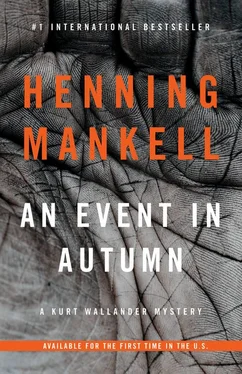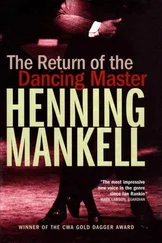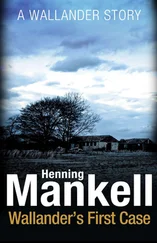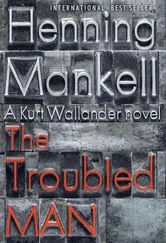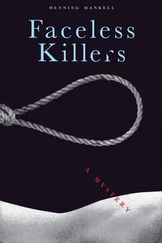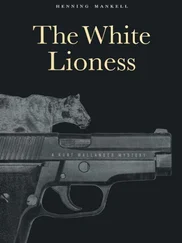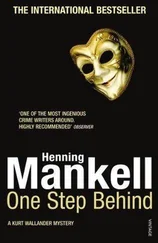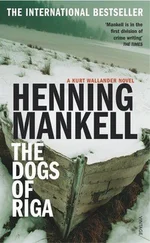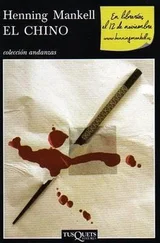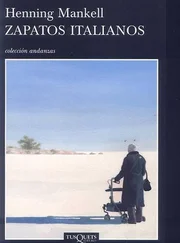But I was still not convinced that there would be a series of novels featuring Kurt Wallander. However, on January 9, 1993, I sat down in my little apartment in Maputo to write a third book. It was to be called The White Lioness , and would be about the situation in South Africa. Nelson Mandela had been released from prison some years previously, but there was still a real danger that civil war might break out and plunge the country into chaos. It did not take long to work out that the worst thing that could possibly happen would be for Mandela to be murdered. Nothing could prevent that from leading to a bloodbath.
But just before I actually started writing I became very ill. I had been wandering around Maputo for some time feeling out of sorts. I was tired out, pale, couldn’t sleep. Could I be suffering from malaria? But blood tests showed no sign of parasites. Then one day I bumped into a good friend of mine who took one look at me and said:
“Your face is all yellow!”
I don’t remember much about being rushed into a hospital in Johannesburg, but once I got there I was diagnosed as suffering from an aggressive type of jaundice, and had been doing so for far too long.
I lay in my hospital bed, working out the story in my mind during the nights. By the time I had recovered sufficiently to travel back home to Maputo, it was more or less ready for writing down. If I remember rightly, I wrote the last page first. That was the point I was working toward!
On April 10 that year, when I had already submitted the text to my publisher, I received worrying confirmation of how my thoughts on the subject had been only too right. On Good Friday a fanatical apartheid supporter shot dead Chris Hani, the chairman of South Africa’s Communist Party, and number two in the ANC. There was no civil war, thanks largely to Nelson Mandela’s intelligent politics. But I still wonder what would have happened if he had been the victim.
People sometimes say about the Wallander books that they deal with events that later happen in real life. I think that is true. I have no doubt that in some respects it is not impossible to foresee the future, and actually to be right. I thought it went without saying that when the Soviet Union collapsed and the eastern states opened up, we would be plagued by a new kind of criminality in Sweden and Western Europe. And that is what happened.
The starting point for The Man Who Smiled is about the worst crime involving property one could possibly commit or be a victim of — and it is not being robbed of one’s possessions. What is stolen in such cases is a part of a human being, an organ that can then be sold for transplantation. When I began writing the book I had no doubt that it was a crime that would increase.
Today it is an industry that is flourishing and expanding.
Why did Wallander become so popular in so many different countries and cultures? What exactly was it that made him so many people’s friend? It is something I have wondered about, of course, and there is no definite answer. But there might be several partial explanations.
Here is the one I believe in preference to all others!
From the very beginning, when I made that spring walk through the fields, I was clear that I would create a human being who was very like myself and the unknown reader. A person who is constantly changing, both mentally and physically. I am changing all the time, and so he would also do the same.
That led eventually to what I somewhat ironically call “the diabetes syndrome.” After the third novel, I asked Victoria, a friend and a doctor who had read the books: “What disease that a lot of people suffer from would you give this man?”
Without a trace of doubt she replied immediately: “Diabetes.”
And so the next time I wrote about Wallander, he was diagnosed as having diabetes. And that made him even more popular.
Nobody can imagine James Bond stopping in a street, while chasing after some criminal or other, in order to inject himself with insulin. But Wallander does, and so he becomes like any other person who suffers from that illness, or something similar. He might have been afflicted by rheumatism or gout, a heart with an irregular beat or soaring blood pressure. But in fact he has diabetes, and he still suffers from it, although he has it under control.
Needless to say there are other reasons why Kurt Wallander has attracted so many readers. But I think the fact that he is always changing is crucial. There is a major but simple reason for this: I can only write books that I would want to read myself. And a book in which I either know all there is to know about the main character after just one page, or realize that nothing is going to change him or her in any way for the next thousand pages, is not a book I would have the patience to read.
You attract a lot of friends in the world of art. Sherlock Holmes still receives letters written to him in Baker Street, London. I get letters, e-mails and telephone calls from many countries. I am stopped in the streets of Gothenburg just as often as in Hamburg. The questions people ask me are friendly, and I try to answer them as best I can.
Most of the people who contact me are women who hope to cure Wallander’s loneliness. I seldom answer those letters. Nor do I think that the writers expect an answer. People are sensible, despite everything. You can’t live with literary characters no matter how much you might like to. You can have them as imaginary friends that you can call up when you need them. One of the tasks of art is to provide people with companions. I have seen people in paintings who I hope to meet in the street one of these days. There are characters in books and films who become so alive that we turn a corner and expect to see them standing there. Wallander is one of those characters who hides behind corners. But he never emerges and shows himself. Not to me, at least.
I was once almost lost for words. It was 1994. There was to be a referendum in Sweden about whether or not we should join the EU. I was walking along Vasagatan in Stockholm when an elderly man stopped by my side. He was very friendly and well mannered, and asked if I was who he thought I was. I said yes. He then asked the following question:
“I wonder if Kurt Wallander will vote for or against the EU?”
His question was serious. I had no reason to doubt that. His curiosity was genuine. But how should I answer? I had never thought about it, of course. I tried desperately to think whether or not I knew if the Swedish police force as a whole was in favor of membership or not. In the end I said: “I think his vote will be the opposite of mine.” And I walked away before the friendly man had an opportunity to ask a follow-up question.
On that occasion I voted against membership. And so I am convinced that Wallander voted in favor.
A question I am often asked is what books Wallander reads.
It is a good question, because it is difficult to answer. I sometimes think he reads the books I write. But I’m not entirely convinced.
Unfortunately I don’t think Wallander is much of a reader — and what he does read is unlikely to be poetry. But I imagine that he likes reading about history, both factual books and historical novels. And I think he has always been fascinated by books about Sherlock Holmes.
Some people think that what I am about to say is completely untrue. But it is true. It is not a myth. It really did happen.
About fifteen years ago I started writing a book that would have Wallander as the main character. I wrote about a hundred pages, which is the point at which I start to believe seriously that what I am writing is destined to be a book.
But it didn’t turn out that way. After a few more pages I gave up and burned — literally — every page that had been printed out. I also erased the computer file, and when I bought a new computer shortly afterward I destroyed the old hard disc. I think I can say with confidence that there are no ones and zeros left that could be used to re-create those hundred pages.
Читать дальше
